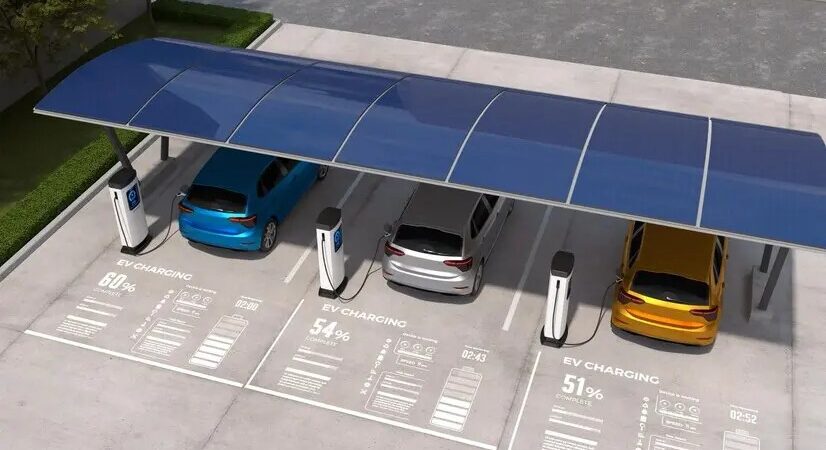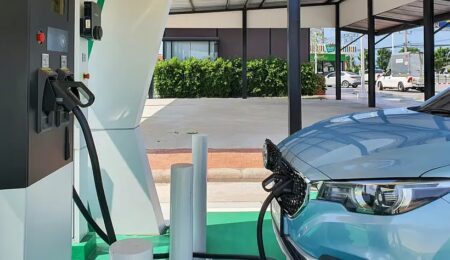Introduction
As a leading EV charger manufacturer in China, Topper Company provides dependable electric vehicle charging station equipment and comprehensive charging solutions.
As the adoption of electric vehicles (EVs) continues to grow rapidly, the need for reliable and scalable charging infrastructure becomes increasingly important. A key component in ensuring the seamless operation of this infrastructure is the communication protocol that connects EV charging stations with central management systems. Among the most widely adopted standards is the Open Charge Point Protocol (OCPP) 1.6. This protocol plays a crucial role in enabling interoperability, flexibility, and innovation in the EV charging ecosystem.
In this article, we’ll explore the significance of OCPP 1.6, its benefits for businesses and charging network operators, and why it remains an essential standard for modern EV charging infrastructure.
What is OCPP 1.6?
The Open Charge Point Protocol (OCPP) 1.6 is an open communication standard that facilitates interaction between EV charging stations and central management systems (CMS), also known as Charge Point Management Systems (CPMS). Unlike proprietary protocols that bind users to a single manufacturer’s ecosystem, OCPP 1.6 ensures that chargers from different manufacturers can seamlessly integrate with various back-end software platforms.
Key Features of OCPP 1.6
- Interoperability: OCPP 1.6 enables chargers and software from different vendors to work together, eliminating vendor lock-in and promoting competition.
- Remote Monitoring & Control: Charging station operators can manage charging sessions, run diagnostics, and update firmware remotely.
- Smart Charging: It supports features like load balancing, dynamic power adjustment, and integration with renewable energy sources, ensuring efficient energy use.
- Enhanced Security: OCPP 1.6 improves on previous versions with stronger authentication and encryption measures.
- Scalability: Designed to handle large-scale deployments, OCPP 1.6 is ideal for commercial and public charging networks.
By adopting OCPP 1.6-compliant chargers, businesses and network operators gain the flexibility to choose hardware and software independently, fostering innovation in the EV charging market.
Why OCPP 1.6 is Essential for EV Charging Networks
- Vendor Neutrality & Flexibility
OCPP 1.6 gives businesses the freedom to choose chargers and software solutions from different vendors, avoiding the constraints of proprietary networks. With this protocol, businesses can:
- Select chargers based on cost, features, and reliability.
- Choose a software platform that best fits their needs.
- Change software providers without needing to replace hardware.
This flexibility encourages innovation, improving pricing, technology, and service offerings within the EV charging industry.
- Future-Proofing Infrastructure
The EV sector is evolving rapidly, and OCPP 1.6 ensures compatibility with emerging technologies. This includes:
- Vehicle-to-Grid (V2G) Integration: Enabling bidirectional charging, where EVs can return power to the grid.
- Advanced Energy Management: Supports dynamic load balancing to optimize power distribution across multiple chargers.
- Smart Grid Integration: Facilitates demand-response programs, adjusting charging speeds based on grid conditions.
By choosing OCPP 1.6-compliant chargers, businesses can avoid costly hardware upgrades as new features and standards emerge, ensuring their infrastructure remains relevant for the future.
- Enhanced User Experience & Operational Efficiency
For charging network operators, OCPP 1.6 provides powerful tools that improve daily operations:
- Remote Diagnostics & Troubleshooting: Helps reduce downtime by allowing operators to identify and fix issues remotely.
- Real-Time Monitoring: Provides valuable insights into charging sessions, energy consumption, and revenue generation.
- Automated Billing & Authentication: Supports various payment methods, including RFID, mobile apps, and plug-and-charge functionalities, for a smoother user experience.
These features streamline operations, reduce maintenance costs, and improve the overall charging experience for EV drivers.
Business Benefits of Adopting OCPP 1.6 Chargers
- Attracting Eco-Conscious Customers
Consumers are increasingly prioritizing sustainability. Businesses that install OCPP 1.6-compatible chargers demonstrate a commitment to green energy, which can enhance their reputation and attract environmentally-conscious customers.
- Retailers & Restaurants: EV charging stations can increase customer dwell time, leading to higher sales.
- Hotels & Workplaces: Providing charging stations as an amenity enhances guest and employee satisfaction.
- Fleet Operators: Efficient charging management can lower operational costs and support sustainability goals.
- New Revenue Streams
Charging stations present businesses with several revenue-generating opportunities:
- Pay-per-Use Models: Set pricing based on energy usage, charging time, or flat fees.
- Membership & Subscription Plans: Create recurring revenue from regular users.
- Advertising & Partnerships: Charging stations can display ads or partner with energy providers to generate additional income.
- Government Incentives & Compliance
Many governments offer financial incentives for installing OCPP-compliant EV chargers, such as grants, tax credits, or rebates. Additionally, OCPP 1.6 compliance may be necessary to qualify for certain public funding programs.
OCPP 1.6 vs. OCPP 2.0: Which to Choose?
While OCPP 2.0 introduces advanced features such as ISO 15118 (Plug & Charge) and improved security, OCPP 1.6 remains the most widely deployed version due to its stability and broad compatibility.
When to Choose OCPP 1.6:
- Cost-Effectiveness: OCPP 1.6 chargers are often more affordable.
- Proven Reliability: It has a strong track record in real-world deployments.
- Existing Infrastructure Compatibility: Many networks still operate on OCPP 1.6.
When to Consider OCPP 2.0:
- Future-Readiness: If advanced features like Plug & Charge are essential.
- Higher Security Needs: OCPP 2.0 offers stronger encryption.
For most businesses, OCPP 1.6 offers the ideal balance of functionality, cost, and compatibility.
Conclusion: Open Standards Shape the Future of EV Charging
OCPP 1.6 is a cornerstone of modern EV charging infrastructure, ensuring interoperability, scalability, and ongoing innovation. By adopting OCPP 1.6-compliant chargers, businesses can:
- Avoid vendor lock-in and reduce long-term costs.
- Improve the user experience with smart, reliable charging solutions.
- Future-proof their infrastructure for new technologies.
- Align with sustainability goals and attract eco-conscious customers.
As the EV market continues to expand, OCPP 1.6 will remain a vital standard, ensuring seamless connectivity between charging stations and central management systems. By investing in OCPP-compliant solutions today, businesses can set themselves up for success in the evolving electric mobility landscape.
Next Steps for Businesses
- Evaluate Your Charging Needs: Determine the appropriate number and types of chargers for your location.
- Select OCPP 1.6-Compliant Hardware: Partner with reputable manufacturers that support the standard.
- Choose a Robust CPMS: Ensure a smooth and efficient integration with your charging network.
- Explore Incentives: Check for government grants or utility rebates that support EV infrastructure development.
By embracing OCPP 1.6, businesses can establish a scalable, efficient, and future-proof EV charging network that meets the demands of tomorrow’s electric vehicle ecosystem.
Final Word:
The transition to electric vehicles is accelerating, and OCPP 1.6 is essential to enabling a connected and interoperable charging infrastructure. Businesses that adopt this protocol today will be well-positioned to succeed in the rapidly evolving electrified future.Know more about Google SEO Directory




Leave a Reply